Writing Curriculum
At Village Primary, we strive to create an environment that promotes both reading and writing whilst strengthening the link between them. In order to ensure that all learners become confident writers, we encourage children to be creative whilst embedding key writing skills within their writing. These skills are taught explicitly and follow a progressive approach, allowing pupils to revisit and build on prior learning.
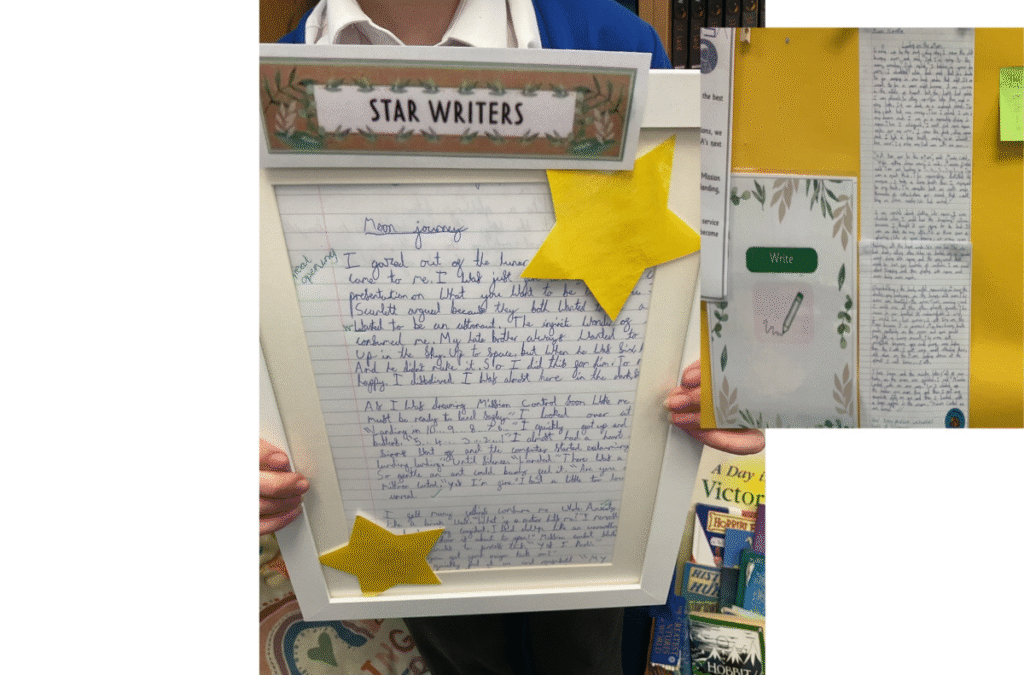

High quality literature drives the children’s writing, with outcomes being based around these books. The use of the ‘Ready Steady Write’ scheme supports teachers with text choices linked to writing outcomes. At the start of each unit, the intended audience is shared ensuring pupils have a purpose for their writing. Drama activities support the children in becoming fully immersed within their writing. Examples include flashbacks, hot seating and conscience alley. Skills, specific to the genre in focus, are taught through explicit grammar and vocabulary embedded within daily writing lessons. These skills are then modelled by the teacher in a shared piece of writing. Pupils are then given the opportunity to apply learnt skills to an independent piece of writing.
Writing is held in high regard throughout all areas of the curriculum, with pupils applying learnt skills to other subjects.
Spelling
Early Years and KS1
Floppy’s Phonics scheme is used as our strategy for teaching phonics and spelling patterns in Early Years and KS1. Sounds and spelling patterns are modelled to children through shared writing during English lessons.
KS2
In order to continue supporting children in learning spellings and developing their writing, we have adopted the ‘Spelling Shed’ scheme. Spelling Shed is a widely used programme that builds on pupils’ phonics knowledge while also introducing them to morphology (the meaning of words) and etymology (the origin of words).
Syllable counting, segmenting of words and sound buttons are used to support children in becoming familiar with spelling patterns which they can therefore aim to embed within their own writing.
Syllable counting, segmenting words, and the use of sound buttons support children in recognising spelling patterns. This enables them to embed these patterns securely within their own writing.
Examples below illustrate some of the skills used:
Segmenting words:

Sound buttons:
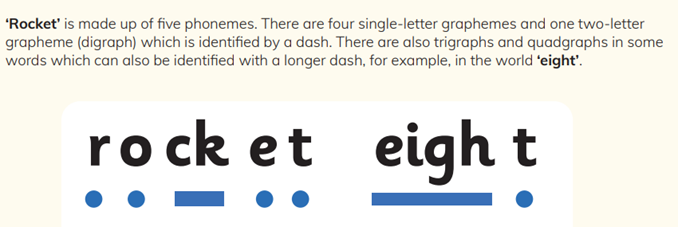
Handwriting
Teaching of handwriting is taught discretely each week. Teachers teach appropriate letter formation and joins, linked closely to the introduction of phonemes and digraphs in EYFS and KS1. Teachers consistently model expected handwriting and support pupils when required. It is the classroom teachers responsibility to ensure pupils handwriting and presentation of work is to a high standard.
KS1
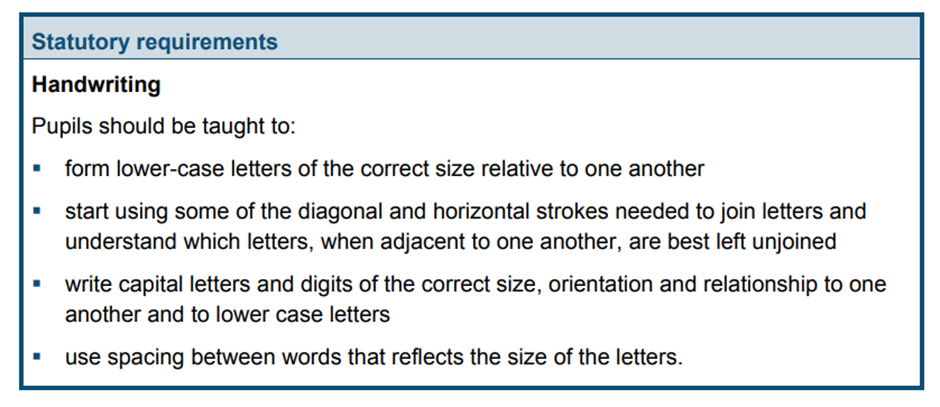
End of Year 4
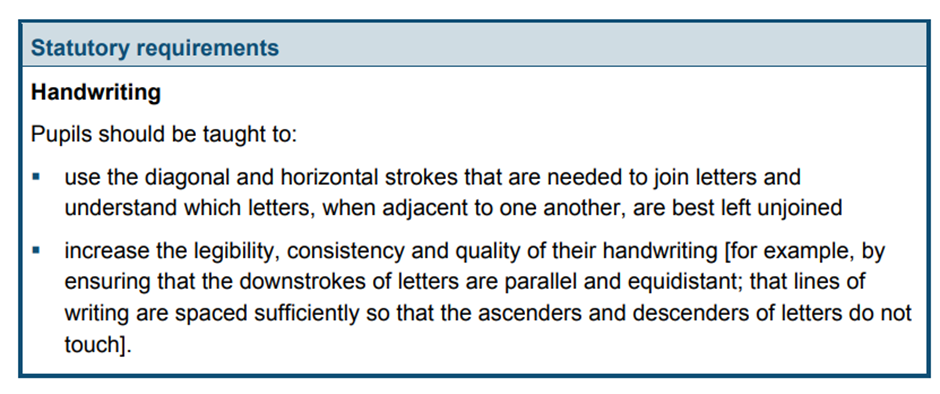
End of Year 6
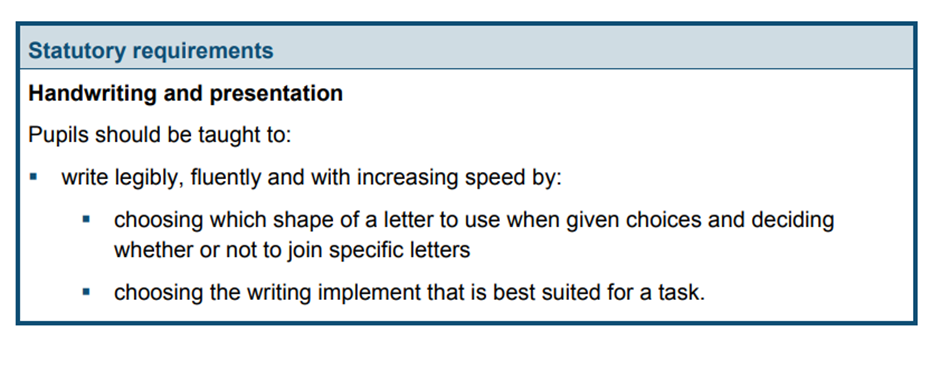
Reception – Early years foundation stage
Prior to, and alongside, the development of letter formation, children in the EYFS access a range of fine and gross motor skill activities that are both child-initiated and adult-supported. To support the development of fine motor skills, and to assess the children’s pre-writing skills, teachers and support staff may choose to use: Pre-handwriting – Developmental Continuum. Please find a copy of the continuum below:

Pencil control – directionality
Teachers and support staff may find it useful to consider the concept of ‘directionality’ when promoting positive handwriting habitats.

Pencil control – pressure control -Teachers and support staff may find it useful to consider pressure control when they are supporting the development of handwriting skills.

Pencil control – Shape manipulation Teachers and support staff may find it useful to consider shape manipulation when they are supporting the development of handwriting skills.

Pencil grip development- Children in reception will be provided with a range of mark making and writing opportunities that are both adult supported and child initiated. The children will be encouraged to explore a variety of pencil grips through mark making opportunities using a variety of different media. The children will be supported to achieving an appropriate pencil grip for their level of development, leading to improved and accurate letter formation. Throughout the year, teachers and support staff will assess the children through observation and they will identify children who may need intervention for fine motor support. Below you will find a progression grid for pencil grip development.

Mark making skills – handwriting patterns Children in reception will be encouraged to access both child initiated and adult directed mark making activities that are cross-curricular. The children will have access to multi-sensory activities, including dough disco and outdoor writing opportunities, to also develop a positive attitude towards mark making and the development of early handwriting skills. As part of this provision, children will be encouraged to make the following patterns to support the development of letter formation skills. These patterns lead into the Twinkl handwriting scheme that is being used from year one to year six. Please find the handwriting patterns below:
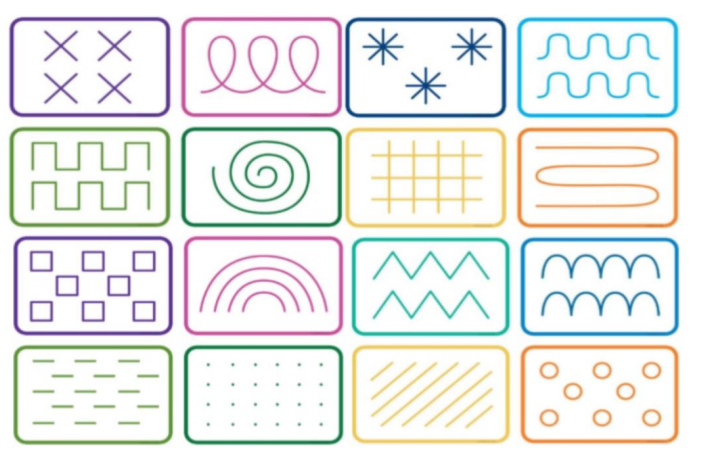
Children will be encouraged to make marks and form letters on different writing formats for example, lines, plain paper and whiteboards. This is to consolidate and apply early writing skills. Most children will be forming letters correctly by the end of reception using different writing formats, for example on plain paper, whiteboards and lined paper. Regardless of which format they are writing on, positive handwriting habits will be recognised and celebrated.
Please refer to the Whole School Handwriting Progression Grid and the Individual Year Group Handwriting Progression Overviews to understand how handwriting is systematically taught across the school and within each term for every year group.
